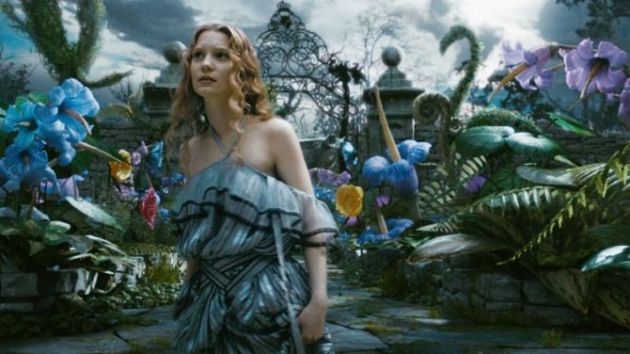Tim Burton's 'Alice in Wonderland' used to detect early-stage psychosis in patients; scientists chose the film specifically for its surreal imagery

Tim Burton is known for leaning towards the surreal when it comes to making movies. "Edward Scissorhands," "The Nightmare before Christmas" and "Alice in Wonderland" are all known for their grandiose, gothic and otherworldly look. Now one of his films is being used to test for early-stage psychosis.
Neuroscientists from Finland's Aalto University recently conducted a study aimed at detecting the first stages of psychosis using Tim Burton's "Alice in Wonderland."
The scientists chose 78 people to participate in the study. Of those 78, 32 had no history of psychosis while 46 had experienced one psychotic episode. No one in the study had been diagnosed with any mental illness.
The subjects' brain activity were recorded as they watched the film so that scientists can examine how a particular area of the brain, the precuneus, reacted to the imagery of the movie. That region of the brain is often associated with memory, consciousness and spatial, visual and self-awareness. Using an algorithm that they created, the scientists were able to determine with 80 percent accuracy which among the subjects were vulnerable to the early stages of psychosis.
According to the study's lead author, Eva Rikandi, they were attempting to identify whether the subject was a "first-episode psychosis patient or a healthy control subject just by looking at their brain activity." Their algorithm not only picked out the patients from the control group, it also showed that their brains did process information differently.
People suffering from psychosis see or interpret things differently and sometimes experience delusions or hallucinations. And while a growing number of people are continuing to suffer from this mental disorder, scientists still have no clear idea about the brain processes of people who might be in its early stages.
Similar studies have been conducted before, but on subjects who were either resting or playing a simple game. This was the first that involved this particular form of stimuli. The Finnish researchers chose "Alice in Wonderland" specifically because its surreal imagery prompts the viewer to process the fact that the character has fallen down into a world that's so different from reality.
The researchers said they hoped their findings would help in the development of early screenings for the disorder and to find a way to diagnose it better. The study has since been presented at the European College of Neuropsychopharmacology Congress in Amsterdam.
